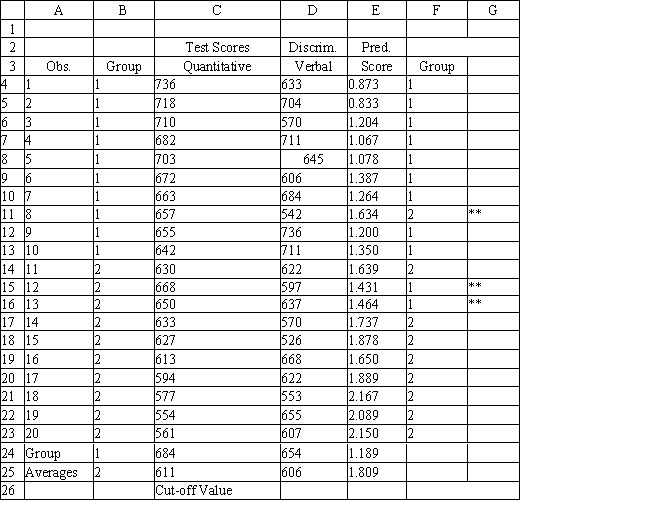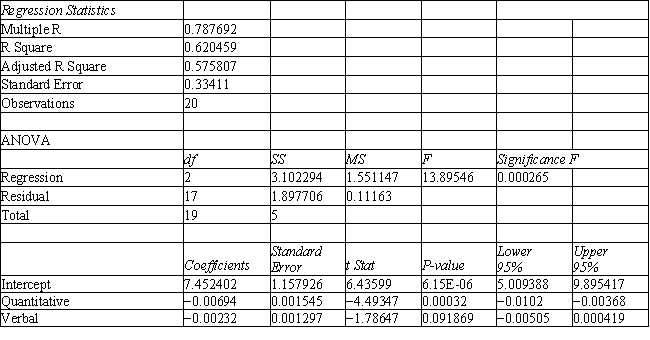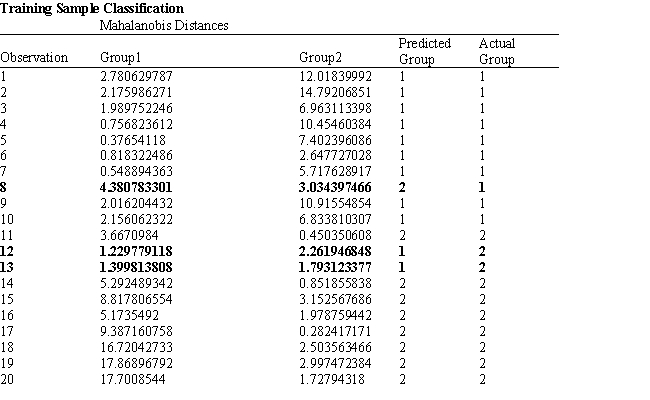Exhibit 10.1
The following questions are based on the problem description and the output below.
A college admissions officer wants to evaluate graduate school applicants based on their GMAT scores, verbal and quantitative. Students are classified as either successful or not-successful in their graduate studies. The officer has data on 20 current students, ten of whom are doing very well (Group 1) and ten who are not (Group 2) . 




-Refer to Exhibit 10.1. What is the straight line distance between (6,4) and (2,9) ?
Definitions:
Year
A period of 365 or 366 days, in the Gregorian Calendar, divided into 12 months, used for calculating time.
Net Operating Income
The total profit of a business after operating expenses are subtracted from gross profit but before taxes and interest are deducted.
Total Manufacturing Cost
The aggregate expense incurred in the production of goods, including direct materials, direct labor, and manufacturing overhead.
Work in Process
Inventory that represents partially completed goods which are still in the production process.
Q1: Refer to Exhibit 10.1. Suppose that for
Q5: In the equation Y = <font face="symbol"></font><sub>0</sub>
Q27: Refer to Exhibit 14.11. What formula should
Q30: Information management has been the key in
Q32: The <font face="symbol"></font><sub>1</sub> term indicates<br>A) the average
Q45: Refer to Exhibit 10.1. Suppose that for
Q50: The general form of an extrapolation model
Q50: A cellular phone company wants to
Q52: Refer to Exhibit 11.6. What formula should
Q55: The customer service desk at Joe's Discount